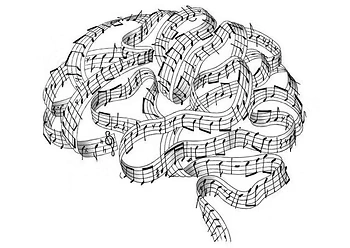What if your playlist could help you become fluent in another language? Science says it can. Listening to music in your target language doesn’t just expose you to new words—it rewires your brain to learn faster and remember more. In this post, we’ll explore what neuroscience reveals about music and language learning, and how you can practically use Aprelendo with music to supercharge your study routine.
What Neuroscience Says: Music Activates Language Circuits
And Why Humans Have Always Used Rhythm to Remember
Long before language apps and dictionaries, people relied on poetry, song, and theatrical performance to remember and transmit knowledge. Ancient cultures across the world used rhythmic and rhyming structures to memorize epic tales, laws, prayers, and entire plays—sometimes thousands of lines long. From Homer’s Odyssey to Shakespeare’s soliloquies, rhythm, meter, and melody served as powerful mnemonic tools.
Why? Because rhythmic repetition and musical phrasing help the brain encode and retrieve information more efficiently. What our ancestors intuitively understood is now confirmed by neuroscience: music engages multiple parts of the brain that support memory, emotion, and language processing.
Let’s break down the science:

- A study from the University of Edinburgh found that learners who sang foreign-language phrases remembered them significantly better than those who only listened or spoke them. The melody acted as a cognitive scaffold, much like poetic meter did in the past (Ludke et al., 2013).
- At the University of Washington, researchers found that infants who received musical training had stronger brain responses to patterns in both speech and music, suggesting a deeply shared cognitive architecture for rhythm and language (Zhao & Kuhl, 2016).
- In Nature Neuroscience, Aniruddh D. Patel reviewed evidence that the brain’s syntactic processing systems are engaged by both language and music. Musical structure—like that found in rhymed poetry or composed lyrics—may strengthen grammatical intuition in a new language (Patel, 2003).
This isn’t just academic theory—it’s a rediscovery of something humans have practiced for millennia: learning through rhythm, repetition, and performance.
How to Learn with Music Using Aprelendo: Two Easy Options
You don’t need to be a musician to turn your favorite songs into a powerful learning tool. Here’s how to make music part of your language study routine using Aprelendo.
Plan A: Use Aprelendo to Watch the YouTube Video with Subtitles
This is the most effective and seamless way to learn with music.
- Find a YouTube video of a song in your target language.
- Upload the link to Aprelendo.
- If the video contains human-made subtitles, Aprelendo will automatically retrieve and display them.
- While watching the video, you can:
- Tap on unknown words
- Look up meanings in the integrated dictionary
- Listen to their pronunciation with clear audio
🎧 This method lets you learn vocabulary and pronunciation in context, while staying fully immersed in the rhythm and sounds of the language.
Note: For a step-by-step guide on how to add a YouTube video to Aprelendo and find videos with human-made subtitles, check out this helpful tutorial: How to Add YouTube Videos to Aprelendo for Language Learning.
Plan B: Use Lyrics + External Music App (Spotify, Apple Music, etc.)
If a video doesn’t have human-made subtitles or you’d rather use your favorite music platform:
- Upload the song lyrics to Aprelendo as Plain Text.
- Set the Type to Lyrics when uploading the text.
- Open the text in Aprelendo while listening to the song on a separate music app.
Inside the text, you can:
- Highlight and save new words
- Look up translations and definitions
- Listen to the correct pronunciation using Aprelendo’s audio support
This approach is slightly less immersive than Plan A, but still powerful—especially if the song isn’t available on YouTube with proper subtitles.
Repetition + Rhythm = Results
One of the biggest advantages of learning with music is natural repetition. Hearing the same lyrics repeatedly helps commit vocabulary and grammar to long-term memory, without the boredom of drilling.
Pro tip: Choose one song per week. Watch or read it daily. By day five, try singing along without looking. You’ll be amazed how much sticks!
Final Thoughts: Learn with Lyrics, Feel the Language
Music makes language learning not only more enjoyable—but more effective. With Aprelendo, you can go beyond passive listening and turn every song into an interactive language lesson.
Whether you’re using a YouTube video with subtitles or reading along with lyrics from Spotify, you’re engaging multiple senses, boosting brain connectivity, and making the language truly stick.

Leave a Reply